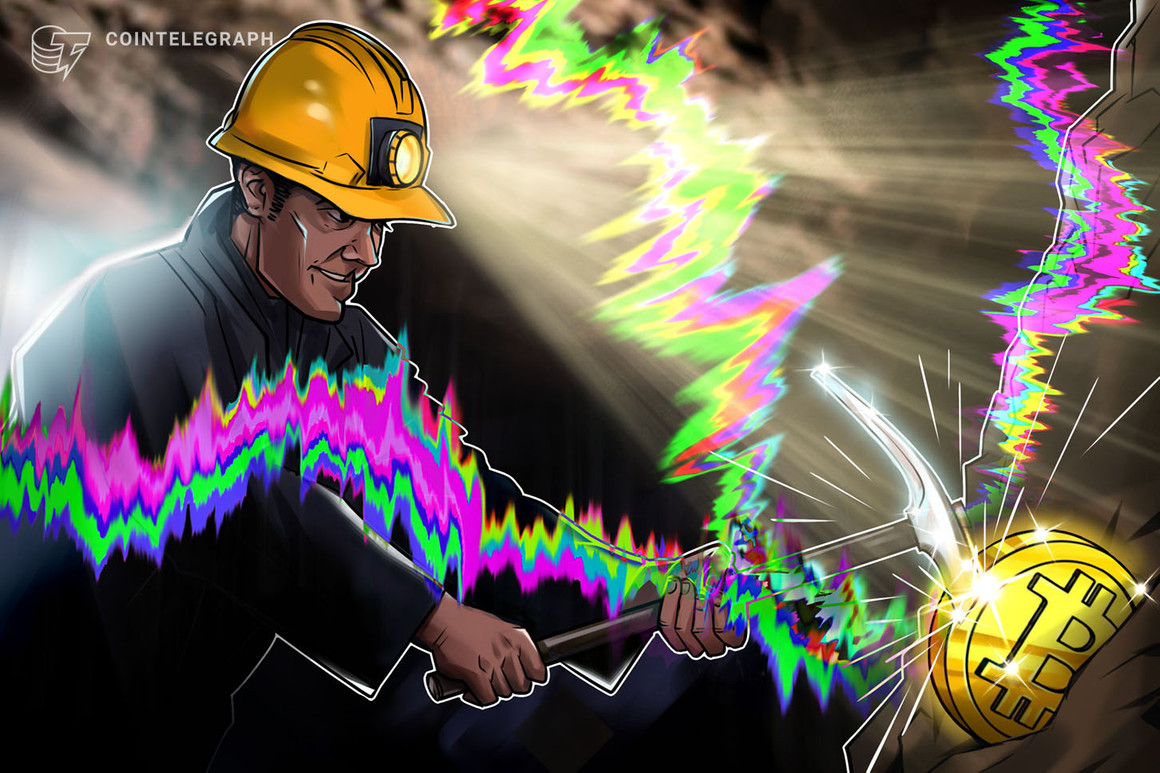The public miners’ share of the Bitcoin (BTC) network could grow to 40% by mid-2023, according to a new report by Hashrate Index. But this could bring more stress to an already bearish BTC market.
Public Bitcoin miners’ hash rate jumps 295% in a year
The outlook appeared after assessing the hash rate performance of Core Scientific, Marathon Digital Holdings, Riot Blockchain, and other public miners in the last 12 months. Notably, these firms increased their hashing capacity to 58 EH/s in October 2022 from 15 EH/s a year ago — up 295%.
Bitcoin mining public versus private hash rate performance. Source: Hashrate Index
In comparison, the private miners’ Bitcoin hashrate increased from 134 EH/s to 177 EH/s in the same period — 58% growth.
“The driving force for the public miners’ rapid capacity increases is that they could access cheap capital during the bull market of 2021,” explained Jaran Mellerud, a Bitcoin mining analyst and author of the Hashrate Index report.
He adds that public miners employed the money to purchase massive mining rigs. As a result, these firms have tens of thousands of Bitcoin mining rigs in storage, waiting to be plugged in, while awaiting deliveries of more rigs.
Core Scientific – the biggest public #bitcoin miner – has a 5% share of the total hashrate. Marathon and Riot follow behind, each controlling over 2% of Bitcoin’s hashrate.
In total, there are seven public bitcoin miners with a hashrate share of more than 1%. pic.twitter.com/ZnwsFjvQcy
— Jaran Mellerud (@JMellerud) October 24, 2022
Thus, the Bitcoin hash rate generated by public miners could continue to increase substantially as more and more new machines come online.
On the other hand, private miners couldn’t access the capital to purchase mining rigs. So their hash rate contribution growth may remain slower by comparison, argues Mellerud.
Stressed miners could boost Bitcoin selloff risks
But in 2022, Bitcoin miners in general have been battered by declining BTC prices, rising energy costs, regulations, and growing competition. Public mining firms have rushed to raise capital by issuing additional stakes or by taking on more debt, resulting in massive declines in their stock prices.
For instance, Valkyrie Bitcoin Miners ETF (WGMI), which tracks several major public miners, has plunged 75% since its launch in February.
 Valkyrie Bitcoin Miners ETF weekly price chart. Source: TradingView
Valkyrie Bitcoin Miners ETF weekly price chart. Source: TradingView
Another unpopular alternative to raising capital is selling Bitcoin at lower prices. For instance, Core Scientific has dumped 85% of its Bitcoin holdings since the end of March, according to its August update.
Related: Kazakhstan among top 3 Bitcoin mining destinations after US and China
The same period witnessed BTC’s price decline by 60% to around $19,500 a token. In other words, a growing hash rate may boost miners’ need to sell Bitcoin for cash to keep their operations running.
“Its an absolute bloodbath,” wrote Marty Bent, founder of Bitcoin media company TFTC, adding:
“Bitcoin miners are in a world of hurt right now and the likely outcome is a wave of failures in the coming months as hashrate continues to pump, the price remains flat and as energy prices continue to rise.” BTC/USD weekly price chart. Source: TradingView
BTC/USD weekly price chart. Source: TradingView
Meanwhile, Mellerud says that many public miners will not be able to handle a decline in cash flows, resulting in bankruptcies. As a result, their mining rigs could be auctioned off to private miners.
Conversely, public miners’ decision to increase their capacity may pay off if the Bitcoin price undergoes a decisive bullish reversal. As Cointelegraph reported, signs of a potential market bottom are already emerging, which would provide relief to miners struggling at current prices.
The views and opinions expressed here are solely those of the author and do not necessarily reflect the views of Cointelegraph.com. Every investment and trading move involves risk, you should conduct your own research when making a decision.


